Southern Africa - South Africa, Botswana, Zimbabwe, Zambia, Namibia
August 23 - September 15, 2016
Part Two, Page Three- Kruger National Park, South Africa
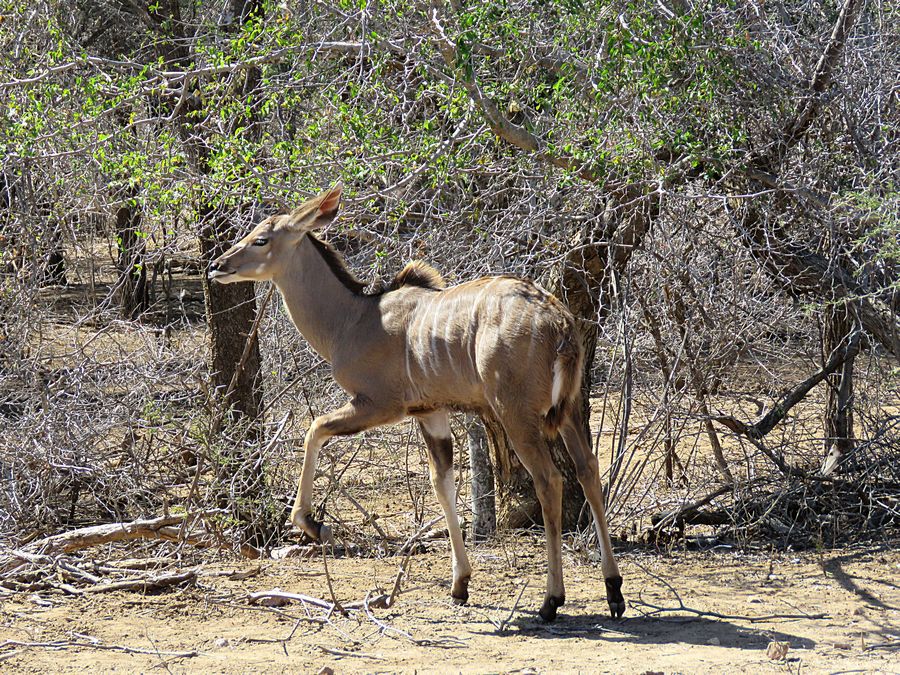
Female kudu
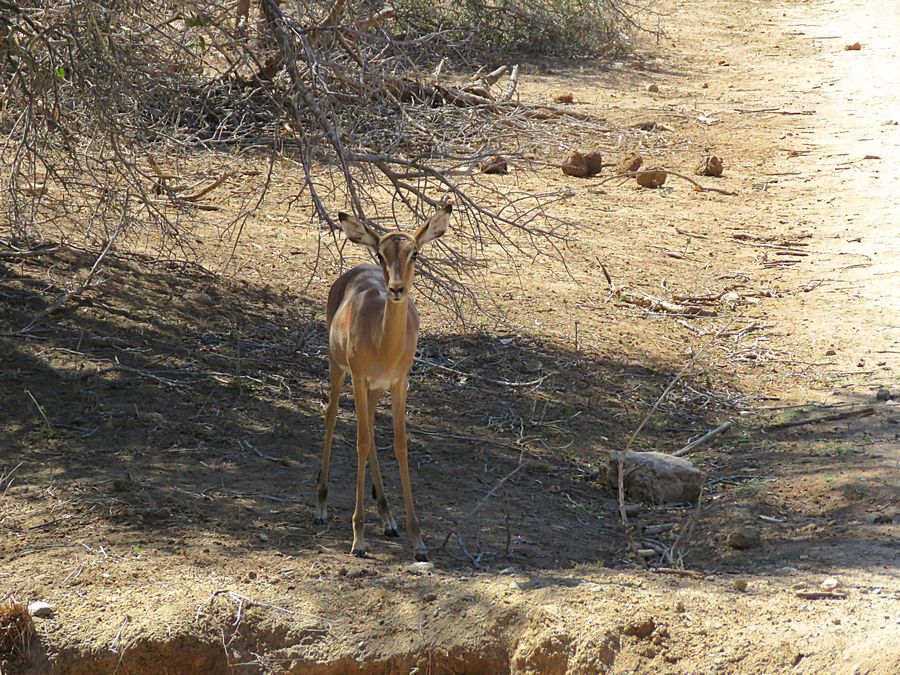
Cute young impala checking us out
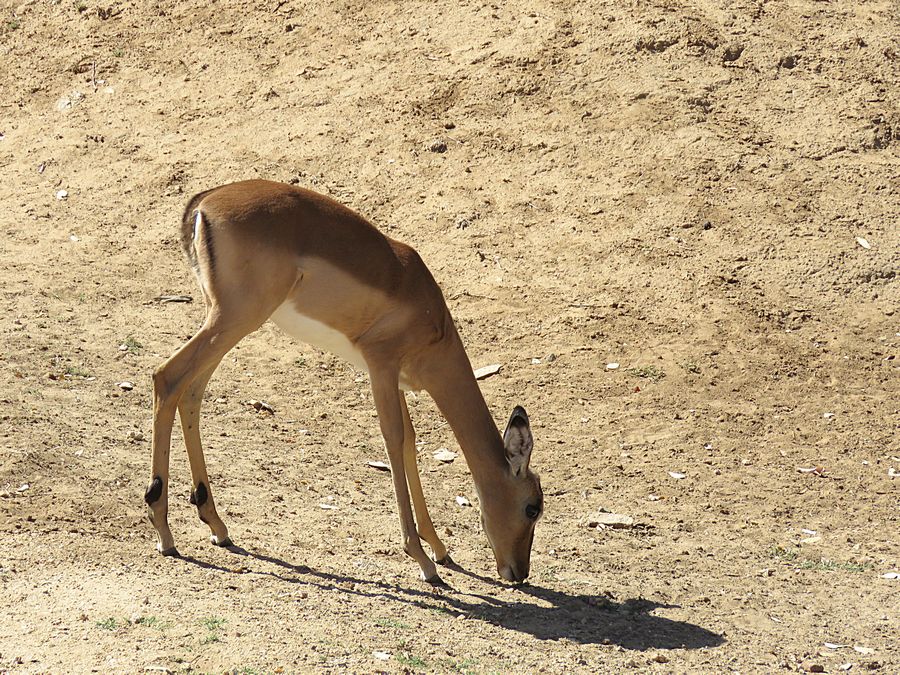
Apparently we didn't look threatening
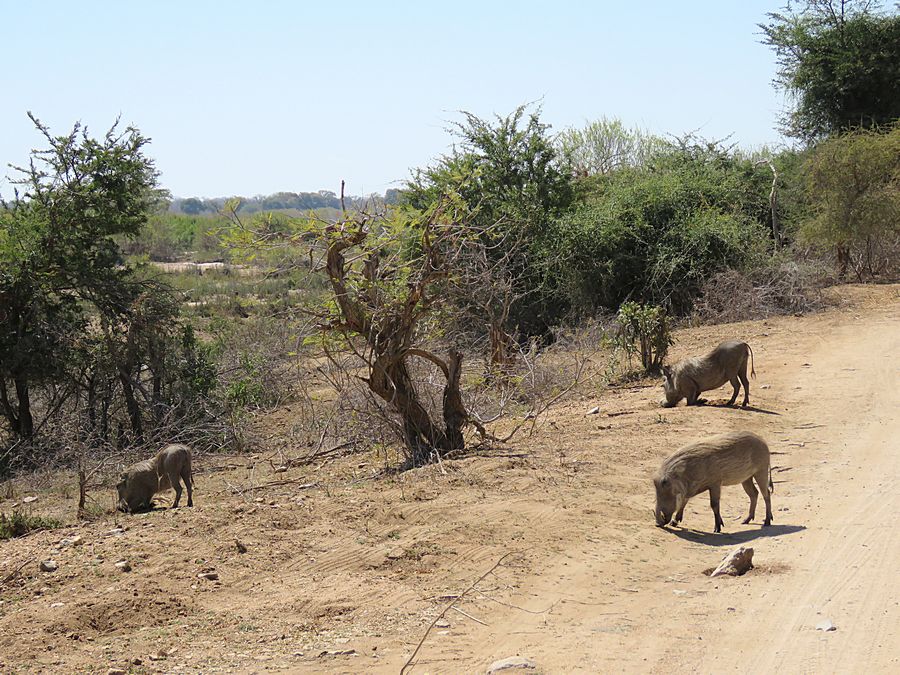
Warthogs - They are adaptable and are able to go long periods
without water, as much as several months in the dry season.
They live in family groups of a boar, a sow, and offspring from
several litters.

Warthog kneeling. They eat grasses and plants, and also use their
snouts to dig or "root" for roots or bulbs.

You do see them during daylight hours grazing. They have tusks
that emerge from the mouth in a semicircle upwards and outward.
This one looked like it had been tagged (see front right leg).
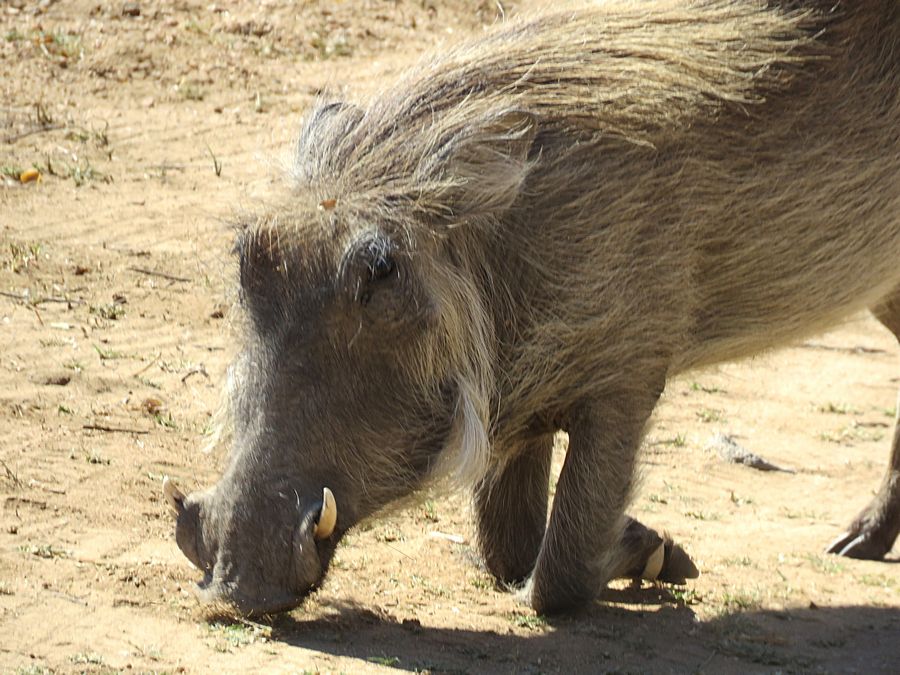
When startled or threatened, they can be surprisingly fast,
running at speeds of up to 30 miles an hour.
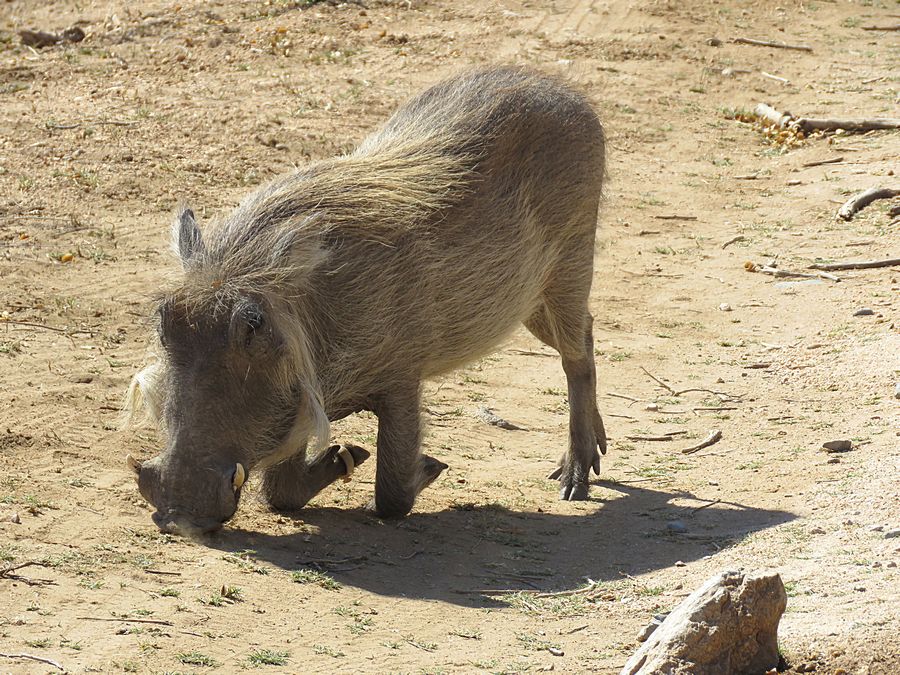
They have a long gray/black mane of hair on the neck
and shoulders.
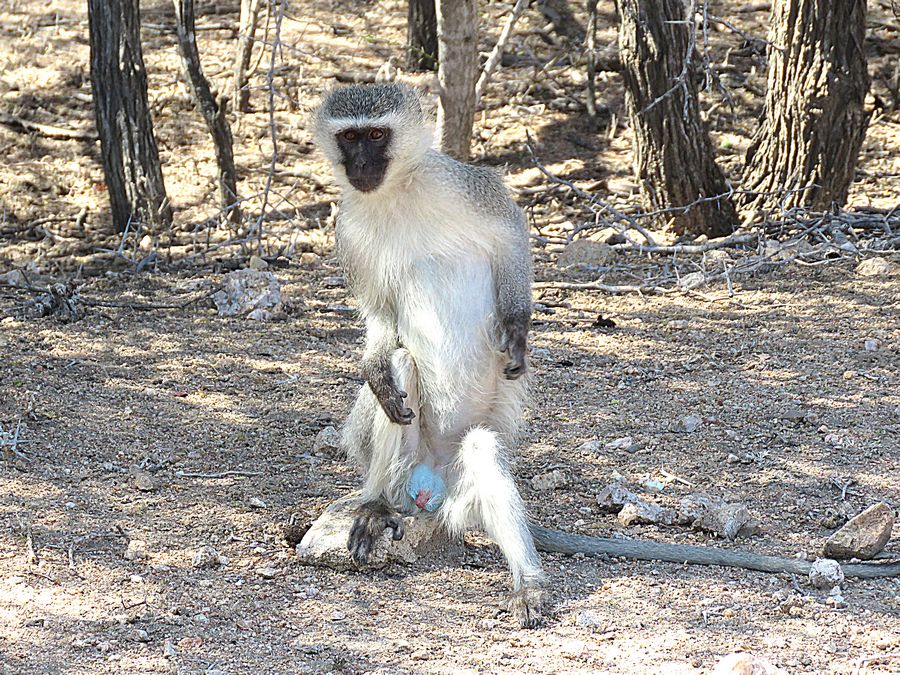
An obviously male vervet monkey sitting on the ground.
Note really long tail.
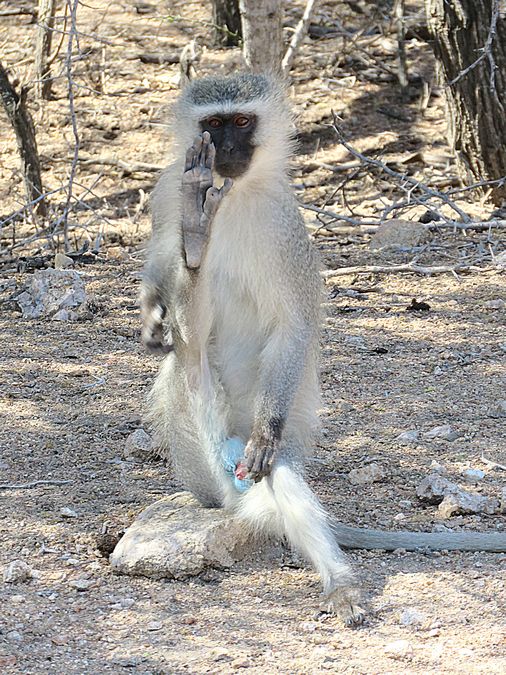
This vervet monkey appeared to be waving at us.
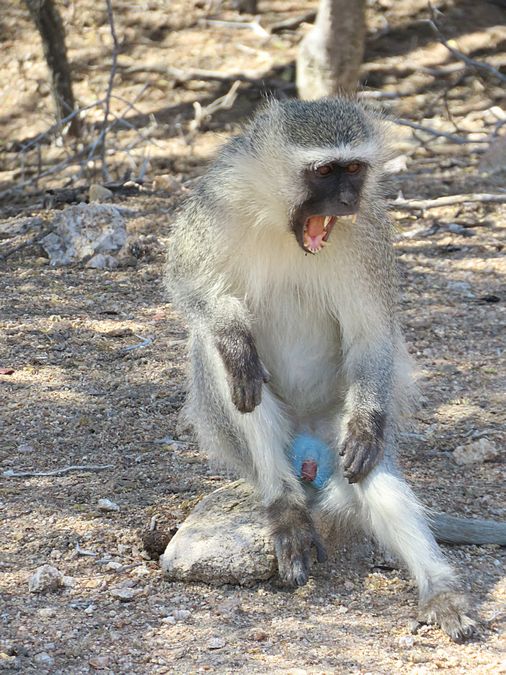
A big yawn
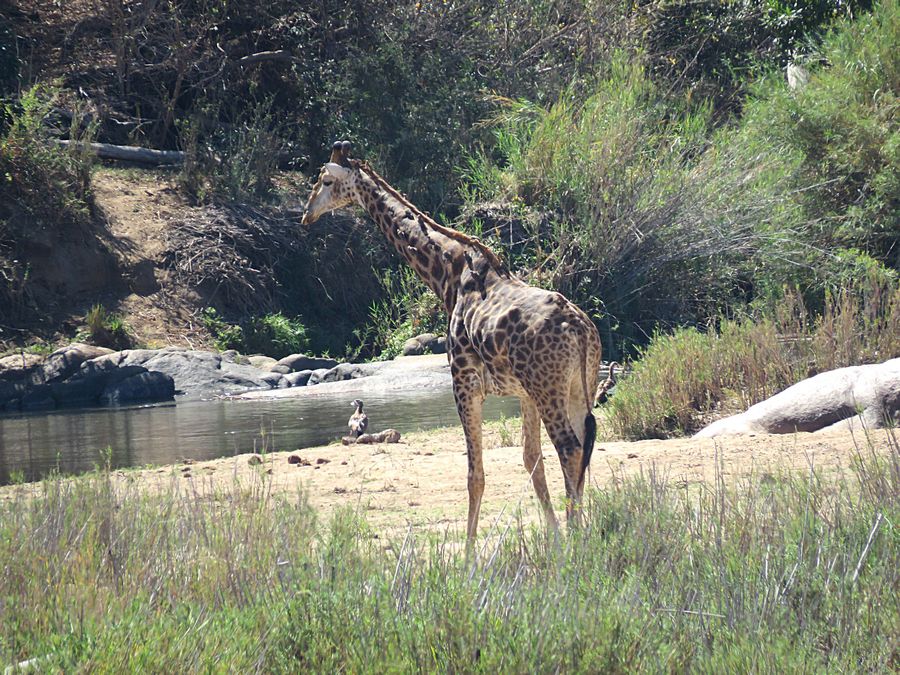
Giraffe about to drink water near the Sabie River
in Kruger National Park

Nyala - Found in areas of savannah woodlands, scrub and
thickets, usually close to water. They have a broken white
stripe below their eyes. Only males have horns, which have
white tips.
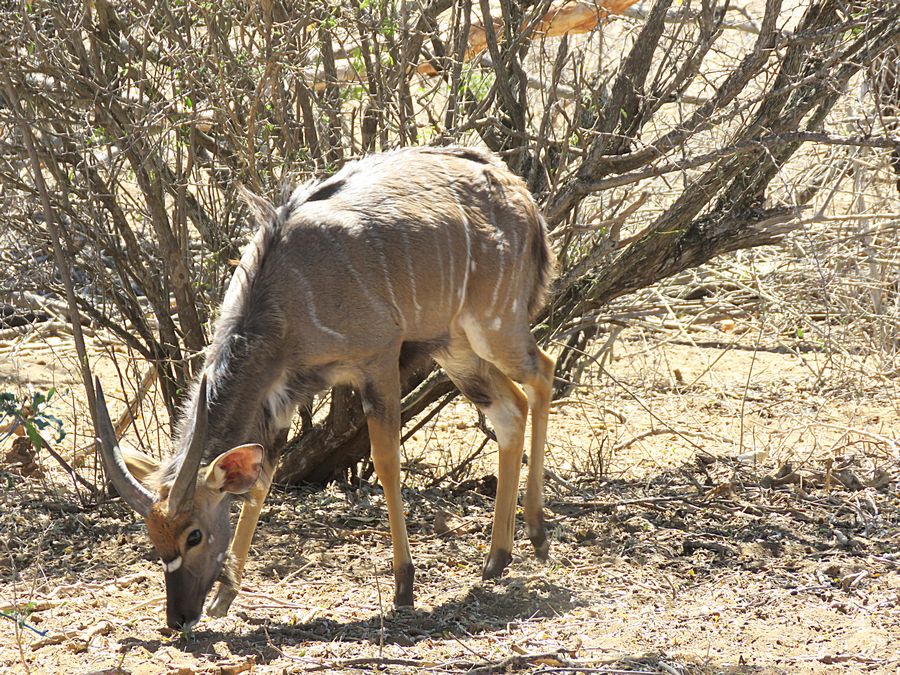
Nyala have 2 white spots on the cheeks below the ears
and a series of white vertical stripes flowing down the sides
of the body.

This is a facial closeup of a male giraffe, as you can tell by
the horns that have bald tips rather than the tufted tips that
females have.

Another elephant about to cross the road.
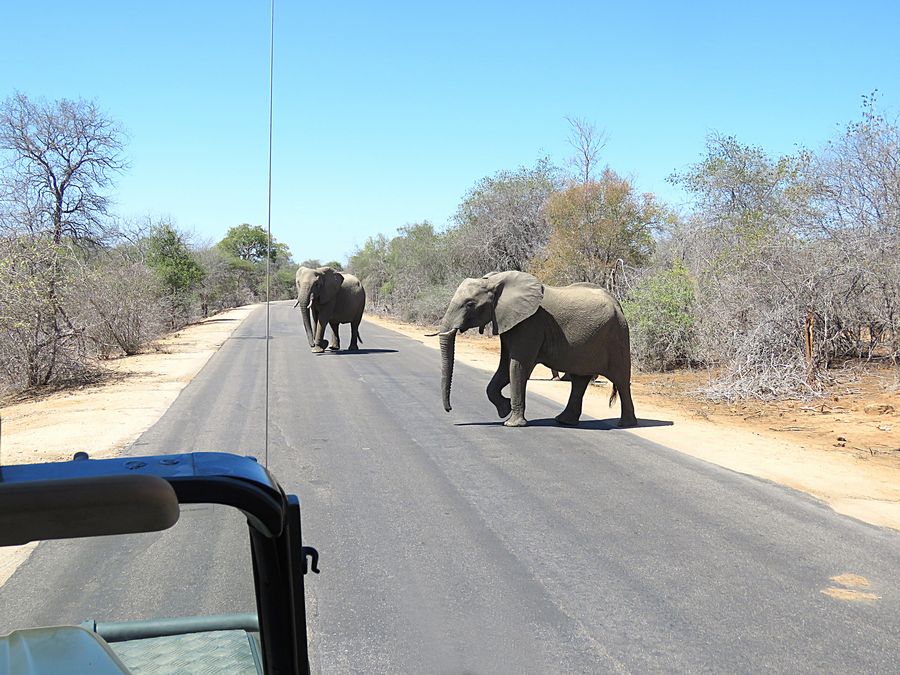
Elephants crossing the road in front of our vehicle.
They expect and receive the right of way.

Baby elephant grazing. Adult females were nearby for
protection.

The gestation period of an elephant is 22 months and fertile
females usually give birth every 3 – 6 years.

Once full-grown, a female elephant can weigh between 7,000
and 10,000 pounds (three to five tons), reaching heights of 10
feet from the toe to the shoulder while a full-grown male can
weigh between 9,000 and 14,000 pounds (four to seven tons)
and stand as tall as 14 feet.
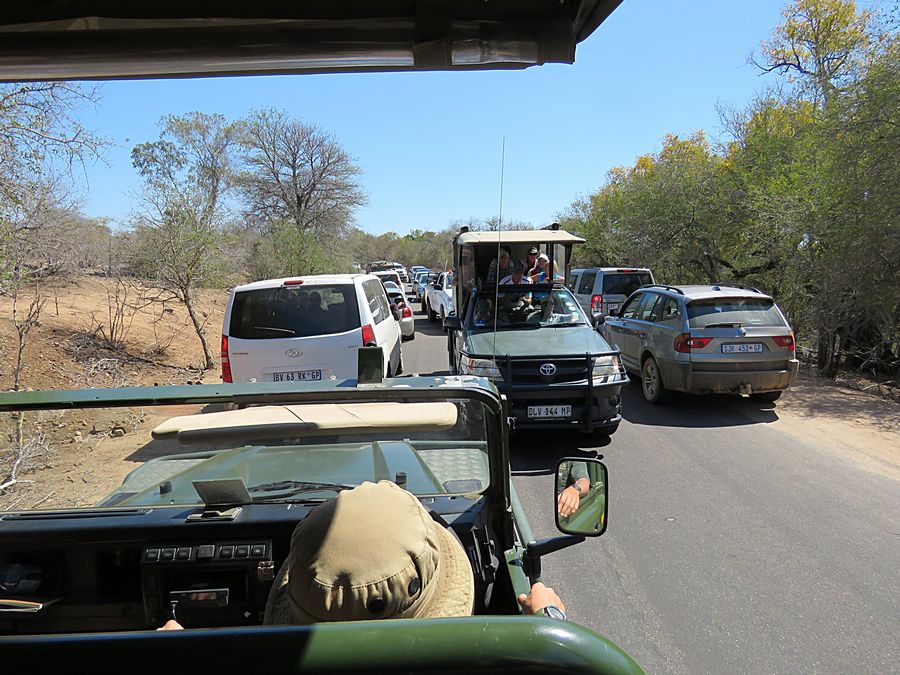
Traffic Jam. Except for the terrain and the safari vehicles, this looks like
Rocky Mountain National Park during elk bugling season.
This traffic jam in Kruger NP that prevented vehicles from
moving was caused, of course, by spotting of a nearby
animal. See next photo to see what it was.
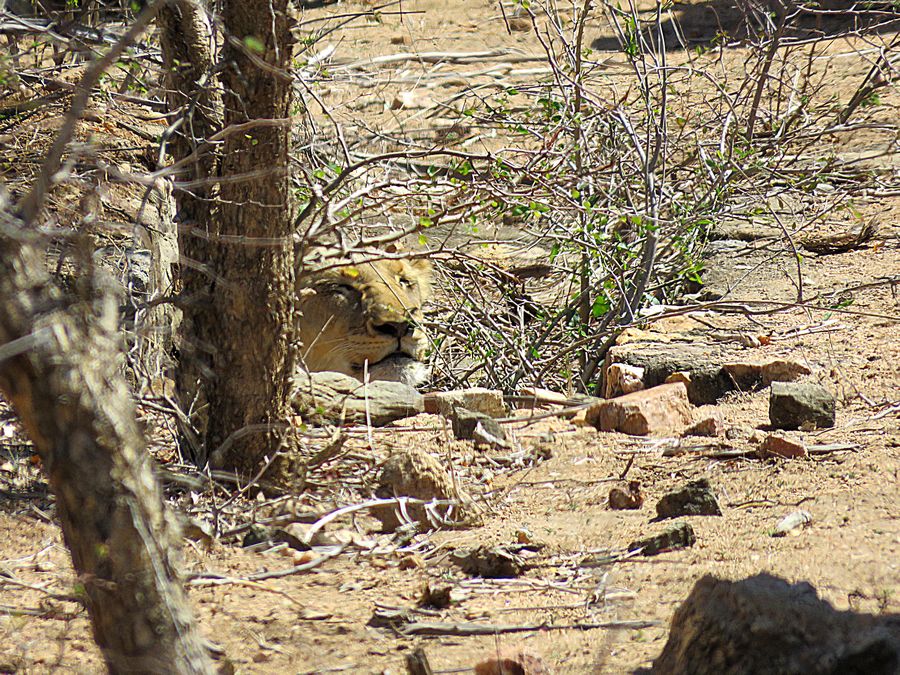
Female lion relaxing within a few feet from the road.
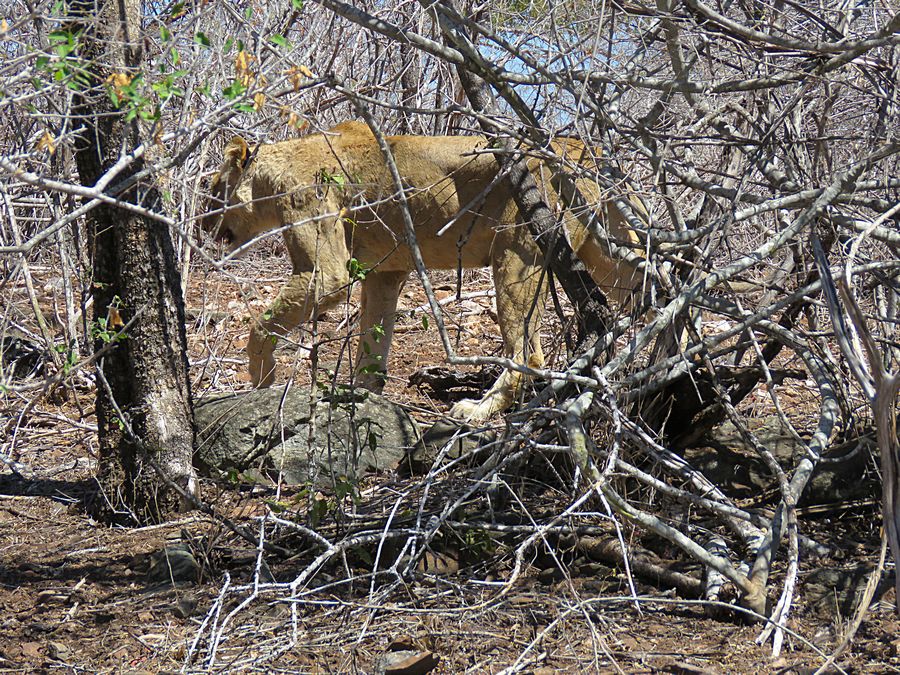
She got tired of all the attention and walked away.

Three hippos (the one in back is only partly in view)
relaxing out of the water of the Sabie River. Hippos are
second in weight only to elephants.

Note the very short legs. Hippos' eyes, ears, and nostrils are
high on their head to remain clear of the water when the
animal has its body submerged.

Goliath Heron that was near the hippos. It is a large,
slate gray heron. It usually nests among reeds. Occurs
singly or in pairs, often standing motionless at water's edge,
as it was here. Large fish and crabs are the main food but baby
crocodiles may also be eaten. It is the largest of the world's
herons.
Link to Part Two, Page Four - Kruger National Park
Pat's Home Page